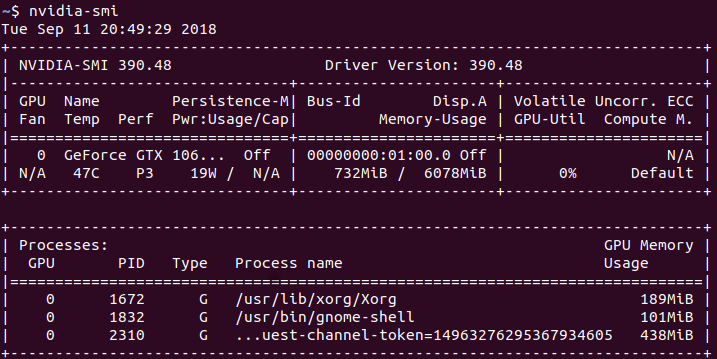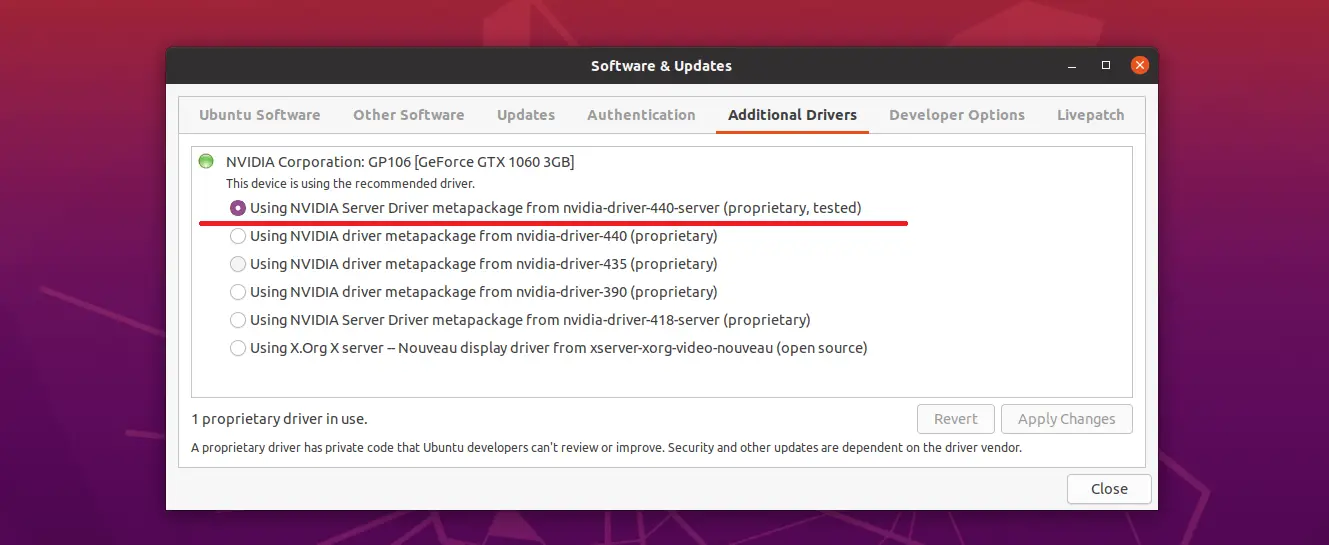
- How to check nvidia version ubuntu install#
- How to check nvidia version ubuntu full#
- How to check nvidia version ubuntu series#
- How to check nvidia version ubuntu windows#
How to check nvidia version ubuntu install#
Note that this method might not work on Ubuntu 18.04 if you install Nvidia driver and CUDA from Ubuntu 18.04’s own official repository. Method 3 - cat /usr/local/cuda/version.txt cat /usr/local/cuda/version.txt Metrics may be used by users directly through stdout, or stored for scripting purposes via CSV and XML formats.įor more information, check out nvidia-smi‘s manpage.
How to check nvidia version ubuntu windows#
NVSMI is also a cross-platform program that supports all popular Linux distros supported by the NVIDIA driver and 64-bit Windows versions beginning with Windows Server 2008 R2.
How to check nvidia version ubuntu series#
For most functions, GeForce Titan Series products are supported with only a limited amount of detail provided for the rest of the Geforce range. nvidia-smi provides tracking and maintenance features for all of the Tesla, Quadro, GRID and GeForce NVIDIA GPUs and higher architectural families in Fermi. Nvidia-smi (NVSMI) is NVIDIA System Management Interface program.

| 0 10277 G …AAAAAAAAAAAACAAAAAAAAAA= -shared-files 290MiB | | 0 7919 G …AAAAAAAAAAAACAAAAAAAAAA= -shared-files 146MiB | | Fan Temp Perf Pwr:Usage/Cap| Memory-Usage | GPU-Util Compute M. | GPU Name Persistence-M| Bus-Id Disp.A | Volatile Uncorr.
How to check nvidia version ubuntu full#
Here is the full text output: Mon Aug 10 23:22:16 2020 This is helpful if you want to see whether GPU is included in your TensorFlow model or software. You can also find the processes which use the GPU at present. Interestingly, you can also find more detail from nvidia-smi, except for the CUDA version, such as driver version (440.100), GPU name, GPU fan ratio, power consumption / capability, memory use. Again, yours might vary if you installed 10.0, 10.1 or even have the older 9.0. The CUDA version information is on the top right of the output. You will see output similar to the following screenshot. To use nvidia-smi to check CUDA version, directly run nvidia-smi You can either install Nvidia driver from Ubuntu’s official repository or NVIDIA website. The second way to check CUDA version for TensorFlow is to run nvidia-smi that comes from your NVIDIA driver installation, specifically the NVIDIA-utils package. Method 2 - Use nvidia-smi from Nvidia Linux driver For nvcc‘s other usage, you can use it to compile and link both host and GPU code.Ĭheck out the manpage of nvcc for more information. It is the main wrapper for the CUDA compiler suite. Nvcc is the NVIDIA CUDA Compiler, thus the name. nvcc -versionĬopyright (c) 2005-2019 NVIDIA CorporationĬuda compilation tools, release 10.1, V10.1.243 What is nvcc?

After the screenshot you can find the full text output too.

Yours can vary, and may be either 10.0 or 10.2. You can see similar output in the screenshot below. To check the CUDA version with nvcc for TensorFlow, execute nvcc -version If you have installed the cuda-toolkit package either from Ubuntu’s or NVIDIA’s official Ubuntu repository through sudo apt install nvidia-cuda-toolkit, or by downloading from NVIDIA’s official website and install it manually, you will have nvcc in your path ( $PATH) and its location would be /usr/bin/nvcc (by running which nvcc). You should be able to see something similar: # GPUs Available: 1 Method 1 - Use nvcc to check CUDA version for TensorFlow Print("# GPUs Available: ", len(tf._physical_devices('GPU')))

To check if TensorFlow is using GPU and how many GPUs are available in your system, run import tensorflow as tf We also assume you have TensorFlow installed. Before we begin, you should have installed NVIDIA driver on your system as well as Nvidia CUDA toolkit.


 0 kommentar(er)
0 kommentar(er)
